
IVF NewsNews: Course Name: Basic and Advanced Clinical Andrology IUI, Reproductive Ultrasound, and QA/QC.
Dr. Prof (Col) Pankaj Talwar VSM 24 June 2022
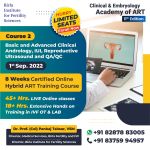
Course Name: Basic and Advanced Clinical Andrology IUI, Reproductive Ultrasound, and QA/QC. 𝙁𝙚𝙬 𝙎𝙚𝙖𝙩𝙨 𝙇𝙚𝙛𝙩! 𝙒𝙝𝙖𝙩𝙨𝘼𝙥𝙥 𝙤𝙣 :- https://wa.me/918287883005 👉🏻Enhance your Clinical Skills in Virtual Ambience with I-Ceat - Clinical & Embryology Academy of ART and Birla Institute for Fertility Sciences! 👉🏻 #𝙊𝙣𝙡𝙞𝙣𝙚 𝘾𝙤𝙪𝙧𝙨𝙚 Starting 𝙛𝙧𝙤𝙢 1st Sept. 2022 👉🏻 45+ Hrs. Live Online Classes 👉🏻 18+ Hrs. Extensive Hands-on Training in IVF OT & LAB 👉🏻 Few Seats Left! 👉🏻 Register Now!!! Dr. Prof.(Col) Pankaj Talwar, VSM Director, Medical Services, Birla Fertility & IVF Director, Birla Institute for Fertility Sciences
𝙑𝙞𝙨𝙞𝙩: www.i-ceat.com 𝙁𝙤𝙧 𝙎𝙪𝙥𝙥𝙤𝙧𝙩, 𝙒𝙝𝙖𝙩𝙨𝙖𝙥𝙥 𝙉𝙊𝙒!!!https://wa.me/918287883005 #MD #MS #IVFCourses #onlinecourses #onlineivfcourses #usg #et #OPU #iceat #OBG #DGO #gynaecologist #obstetrics #certification #semenanalysis #ART #ARTTraining #EmbryologyTraining #Andrology #DrPankajTalwar #birlafertilityandivf #BirlaFertility [ Full Article ] Announcement: MSc in Clinical Embryology - Applications for entry in October 2022
Laura Rose 15 September 2021

The closing date for applications for the MSc in Clinical Embryology course starting in October 2022 is 12 noon BST (UK time) on Friday 15th July 2022. This one year, residential, taught MSc provides graduate students, scientists and clinicians with highly advanced theoretical and practical understanding of human reproductive biology, embryology, infertility and assisted reproductive technology (ART) along with intensive ‘hands-on’ practical training in essential laboratory skills and the sophisticated gamete micromanipulation techniques associated with ART. The department's aim is to inspire, motivate and train a network of future leaders in clinical embryology throughout the world. For details of how apply including the admissions criteria please see our admissions page: http://www.ox.ac.uk/admissions/graduate/courses/msc-clinical-embryology For further information please contact the Course Administrator: [email protected] Follow us on Twitter: @Ox_MSc_ClinEmb Photographs: © Medical Sciences Division and John Cairns [ Full Article ] Conference: ACE 2022 Conference
ACE 2022 21 June 2022
Webinar: RBMO VI
International IVF Initiative 06 June 2022
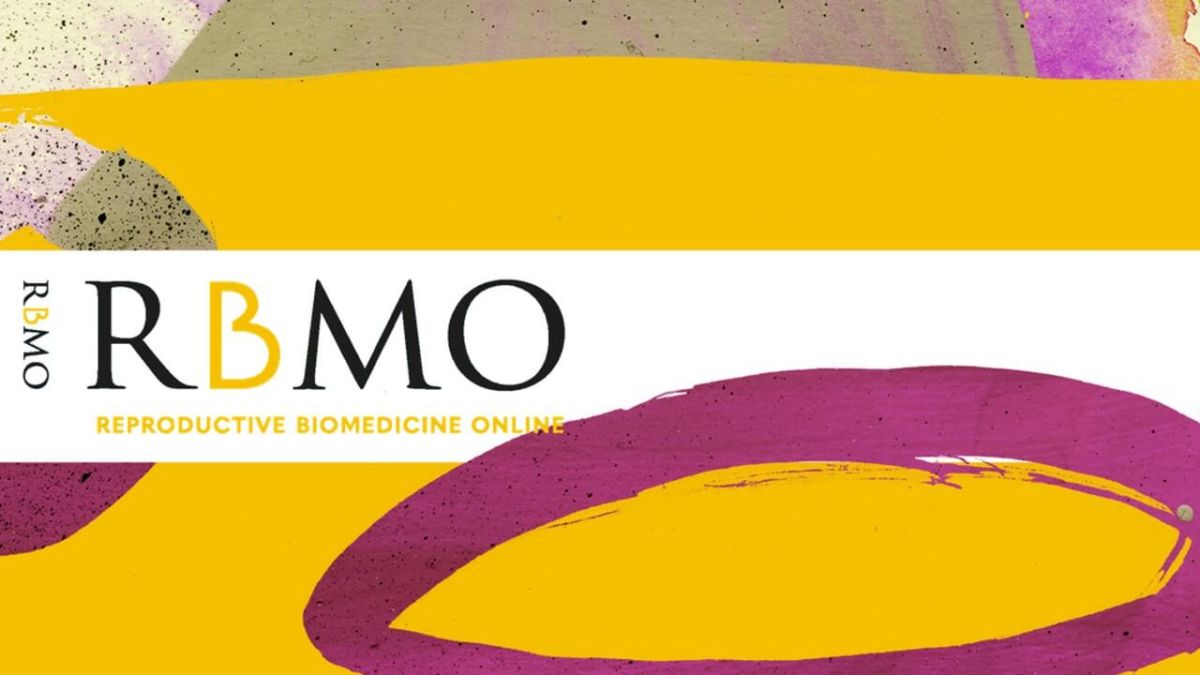
Tuesday, 7th June at 3pm EST, 8pm UK, 9pm CET [ Full Article ] News: ART & Embryology training program
CHENNAI FERTILITY CENTER AND RESEARCH INSTITUTE 04 June 2022
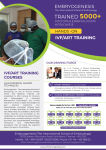
July 2022 Training Batch Schedule - 4th July- 18th July 2022 The International School of Embryology was established to offer training for clinicians in advanced reproductive technologies. Our skill and precision to all aspirants help them to know in-depth knowledge and experience. The members of our teaching faculty aim to bring doctors and embryologists to the highest level of knowledge about reproductive techniques and practical capability in the field. Our courses cover basics in Andrology, embryology, ICSI, and cryosciences (Hands-on). Limited Seats. For admission Contact 9003111598 / 8428278218 [ Full Article ] Announcement: IMPENDING CRYOTANK FAILURE
Shivani Scientific 30 May 2022
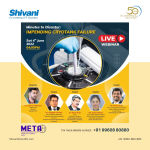
Are you aware of the consequences of an impending #cryotank failure and how within minutes, it can lead to a big disaster? [ Full Article ] News: M.Sc. in Clinical Embryology & Assisted Reproductive Technology (ART)
Reva University 24 May 2022
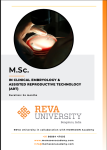
REVA University courses in Clinical Embryology These courses are more holistic, stress is also given to the existing guidelines, regulations and protocols that enable the candidates to perform embryology procedures ethically as well as accurately. EXTENSIVE PRACTICAL EXPOSURE:
ELIGIBILITY: For MSc in CEART- Graduates in Biological Sciences / Life Sciences (B.Sc./B.Tech./BE); Graduates in Medical Sciences (MBBS), Dental Sciences (BDS), Ayurveda (BAMS), Homeopathy (BHMS) and Unani Medicine (BUMS). For admission call or WhatsApp +91 98864 47093 [ Full Article ] News: Air Products is the only UK industrial gas supplier to offer liquid nitrogen compliant to the new Medical Device Regulation
Jackie Taylor 24 May 2022

Air Products is the only UK industrial gas supplier to offer liquid nitrogen compliant to the new Medical Device Regulation Air Products is proud to announce that it has been awarded Medical Device Regulation (MDR) EC Mark certificate for Medical Device liquid nitrogen for the UK. Do I need MDR liquid nitrogen? It depends on your application. If it involves the storage of human tissue samples the chances are that you do. This includes any applications that use liquid nitrogen for preserving blood and bone marrow cells, sperm, ova, early embryos, and, in the microbiology laboratory, a variety of microorganisms (bacteria, fungi, etc) Another application that requires MDR liquid nitrogen is cryotherapy, which refers to the focal application of extreme cold for the in-situ destruction of abnormal or diseased tissue. What does MDR Device liquid nitrogen actually mean? Liquid nitrogen that could come into contact with life science samples through cryogenic storage or cryotherapy is classified as a class IIa medical device, compliance with the MDR means that we as the manufacturers need to ensure that:
I have heard of the Medical Device Directive (MDD) but what is the Medical Device Regulation (MDR)? The MDR replaced the MDD in May 2021. The MDR is substantially more comprehensive and detailed compared to the MDD. The MDR document is four times longer than the MDD and puts more emphasis on product safety. Nothing from within the MDD has been removed, rather the MDR has only added new requirements. Air Products have completed months of work to ensure that liquid nitrogen manufactured and supplied within the UK complies with the new more comprehensive Medical Device Regulation. I need MDR liquid nitrogen, how can I get it? Air Products is currently the only industrial gas company manufacturing liquid nitrogen in the UK that complies with the new MDR, contact us today to discuss your requirements. Contact us to discuss your requirements: E: [email protected], T: 0800 164 8512 More information: www.airproducts.expert/uk/biomedical/medical-device-regulation
[ Full Article ] Article: Are emerging environmental contaminants a threat to male fertility?
Microptic 23 May 2022
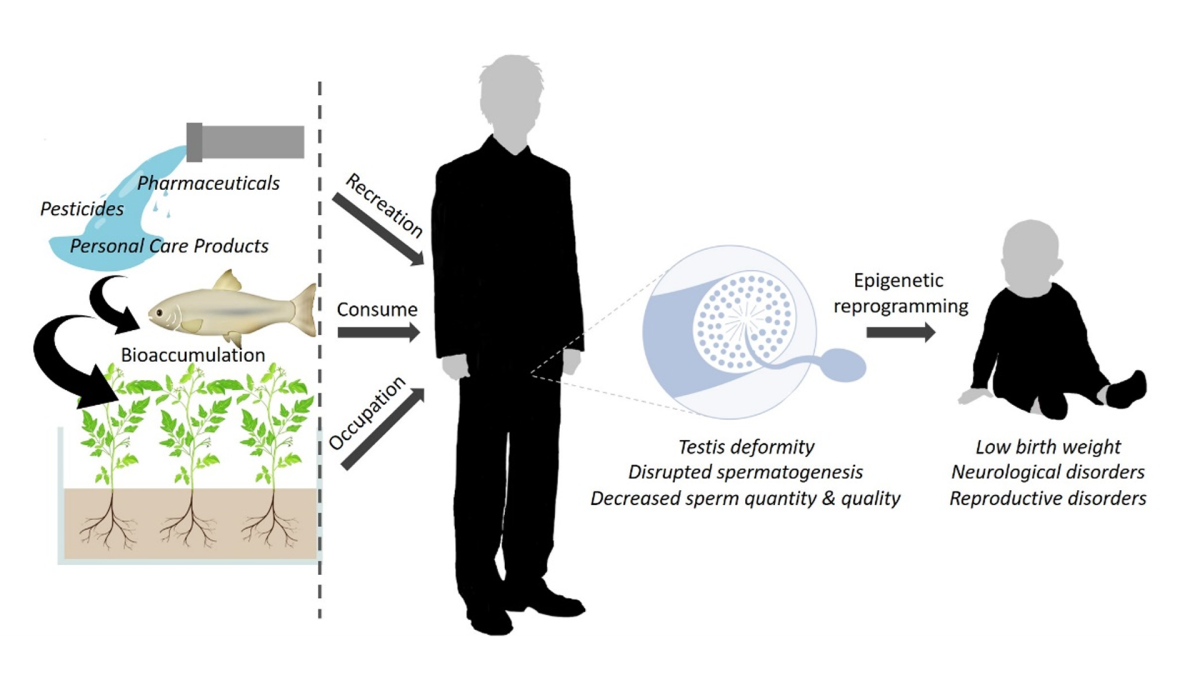
Unexplained male infertility is evident in up to 25% of male factor infertility cases and exposure to environmental contaminants could be one of many culprits in the global decline in male fertility. Since many of these compounds end up in water bodies, it is referred to as Contaminants of Emerging Concern (CECs) and are typically not regulated under current environmental laws. Origin and health impact of CECs One of the main consequences of industrialization is the production, use and discharge of several CECs, including pharmaceuticals, personal care products and pesticides. The presence of CECs is well-documented in a wide range of environmental and food matrices, such as surface water, wastewater, soil, livestock manure, human waste, plants and seafood (Figure 1).
Figure 1: Major sources of emerging contaminants and its distribution to water bodies (adapted from Rasheed et al. 2019). The large-scale use of CECs has resulted in their ubiquitous occurrence in surface and ground water sources and has caused great concern among the scientific community and regulatory authorities in recent years. In addition, current water treatment techniques (e.g. biodegradation, flocculation, ozonation, electrodialysis, reverse osmosis and sedimentation) are not sufficient enough or unable to completely degrade many CECs. As a result, human populations can be exposed to CECs by drinking contaminated water, consuming aquatic species affected by CECs or even recreational activities in affected water bodies. CECs generally refer to compounds that have not previously been detected or only detected in small quantities through water quality analysis and thus the risk they pose to human or environmental health is not yet fully understood. While researchers have started to examine the adverse effects of CEC exposures on human health, including fertility, it has provided varied findings. Many CECs mimic the action of hormones in the body and can disrupt the endocrine system and subsequent basic physiological functions, while others are classified as carcinogens. The prevalent male reproductive side effects of exposure to CECs include gonadal malformations, interference with spermatogenesis, hormone imbalances, and demasculinisation, as was shown for a variety of vertebrates including fish, turtles, birds and mice. In addition, it is suggested that CECs may have a harmful effect on the offspring of affected parents via the inheritance of epigenetic markers. Therefore, parental exposure to the CECs will not only affect the parents themselves but also leave profound signatures in the germline, compromising the health of the next generations (Figure 2).
Figure 2: Effects of contaminants of emerging concern from the source to the offspring of exposed individuals. Recent reports on CECs in the marine environment The Environmental and Nano Science Research Group (Department of Chemistry, University of the Western Cape, South Africa) under the leadership of Prof Leslie Petrik has investigated the occurrence and accumulation of various CECs (including herbicides, pharmaceutical and personal care products) in the marine environment around Cape Town. Many of the CECs detected are most likely due to several wastewater-treatment plants discharging improperly treated effluents into the ocean. Prof Petrik and co-workers reported that the levels of CECs in the seawater, sediment and several marine organisms (seaweed, invertebrates and fish) pose a low acute and chronic risk to various tropic levels due to its bioaccumulation factor and calculated risk quotients. Current investigation on the effect of CECs on sperm function
Figure 3: CEC team in the Comparative Spermatology Group: Daniel Marcu, Shannen Keyser, Liana Maree and Monique Bennett. The Comparative Spermatology Group (Department of Medical Bioscience, University of the Western Cape, South Africa) has joined forces with the Environmental and Nano Science Research Group in deciphering the potential consequence or mechanisms of action of CEC exposure on sperm function in vitro. Two PhD students, Daniel Marcu (School of Biological Science, University of East Anglia, United Kingdom) and Shannen Keyser (Comparative Spermatology Laboratory) (Figure 3), have studied the effects of the most prevalent CECs found in our marine sources on human sperm function, including anti-inflammatory and antibiotic drugs, as well as some herbicides, using computer-assisted sperm analysis (CASA). One of the advantages of CASA is that it allows the researcher to visualize, evaluate and obtain precise information on the swimming characteristics of individual sperm. CASA applications are limitless, and they provide instrumental insights in reproductive toxicology and human fertility. Understanding the specific kinematics and the molecular events underpinning them is of great importance for establishing toxicology level cut-offs for sperm function. Our preliminary results after sperm from donor samples were chronically exposed to several contaminants indicate that the various chemicals disrupt the sperm plasma membrane and metabolic processes. While exposure to the CECs typically decreased the percentage total and progressive motility (Figure 4), more significant adverse effects were found on the kinematic parameters (such as VAP, VSL and BCF), especially in that of the slow and medium progressive speed groups. It was further noted that some of the CECs has varying effects on different motility sperm subpopulations. We are in the process of also assessing its effect of other sperm functional parameters, e.g. vitality, hyperactivation and acrosome reaction.
Figure 4: Motility parameters of a high motile sperm subpopulation of after 30 minutes exposure to various concentrations of the non-steroidal anti-inflammatory Naproxen. Apart from using human sperm to investigate the effect of CECs on sperm function, we also embarked on studying its effect on sperm from broad cast spawners, such as sea urchin and oyster. These species are presumably directly affected by the exposure to contaminants in their marine environment and are known to bioaccumulate CECs. Such testing could in future act as a warning system that identifies the causes of population decline in animal populations, offering potential interventions for conservation of entire ecosystems. Through our investigations, we also hope to increase public awareness about the threat of CEC exposure to the environment and human health. Dr Liana Maree (PhD) Daniel Marcu (PhD Candidate) Shannen Keyser (PhD Candidate) [ Full Article ] Webinar: AI - UNDER THE HOOD
International IVF Initiative 23 May 2022

Tuesday, 24th May at 3pm EST, 8pm UK, 9pm CET [ Full Article ] |